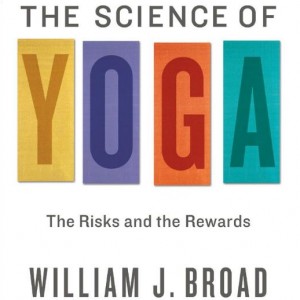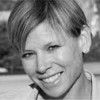I did not want to read The Science of Yoga, The Risks and the Rewards, by William J. Broad. I'd followed the New York Times Magazine's pre-book launch coverage on juicy subjects in Broad's book: yoga and orgies, yoga and paralysis, then a sh%t storm in the yoga community followed. I felt I'd read enough.
When a sincere cousin inquired about Broad's book to learn about yoga and its benefits, I greatly wanted to steer him clear of it. If I, a go-to person on yoga, were going to get credit for sex orgies and exotic practices, at least I should participate in them. But alas, none have ever appeared in my yoga career, not in readings, writings or practices. I sent my cousin straight to a book on Krishnamacharya, a devout Brahman, who many call the father of modern yoga. Dear cousin took my recommendation and mailed me a copy of the Broad book.
It stared at me for a week, and then beckoned to be read. Glad it did because Broad connects some interesting dots.

In a world of yoga 2.0 I'm happy when erudite individuals lend themselves to the study and research of yoga. Which, Broad makes a point, historically hasn't been easy to obtain, mainly due to lack of financial backing or academic interest. Neither government nor Fortune 500 companies have had a horse in the race.
The book, divided into 7 tight chapters, is a must for anyone interested in yoga beyond dipping their toe into the water. Yet one is certainly better prepared to read this book with yoga experience under their belt. For yoga is not one thing, just like health, psychology or philosophy is not one thing but fields of study. If you get past this assumption -- and the biggest mistake in the book -- you discover some interesting stuff about yoga.
For instance, I was reminded how mutable yoga is. From the writings of Patanjali's Yoga Sutras, which are aphorisms on enlightenment, to the political brush to build Hindu national pride during India's Independence, to the current perception, and trending use, of yoga as a form of exercise and relaxation. Most interestingly, however, is how yoga's interpreters, such as B.K.S. Iyengar, have consistently shied away from religion and eroticism to promote yoga as a science, or as Broad does, the science of yoga.
The takeaway from Broad's book, that yoga has the habit of adapting, surviving and thriving, leaves an impression that yoga is for humanity. Broad does not provide much evidence on say how yoga started as a sex cult and does not help translate yoga apart from a physical practice, but instead focuses on what yoga does.
We learn yoga can make us happier, increase sexual pleasure, make us more relaxed, lower metabolic rate, increase creativity and cause serious injury. We also learn what it does not do: increase your heart rate to any beneficial point, produce more oxygen, leave you free from injury. The book compares the risk and rewards of yoga and comes out that the rewards far outweigh the risks.
Yet because yoga is so varied in practice and lifestyle, subjects and their particular practice should be researched more. From personal experience, what I do six days a week for two hours, sweating head to toe, is called yoga, but is far different for someone doing a gentle flow class. Additionally, if yoga does lower the metabolic rate, it does not necessarily mean weight gain is forthcoming. After practicing for over ten years, I find I don't need to eat that much, and what I do eat, is small proportions and fairly healthy. I've never gained weigh doing yoga, unless you count muscle mass.
The other controversial aspect of the book deals with injury. Apparently, in rare cases, yoga can lead to strokes and death. I stress rare because the author's examples of these incidents site the word rare each time. Yet to know that yoga has real risks, however rare, is important for any practioner. Many newcomers and even seasoned practioners believe walking into a yoga class is a ticket to peace, love and relaxation. They might let their guard down or trust too much. Doing any physical activity with the body is prone to risk and no one should think yoga is any different. I know after reading this book, I thought twice about some neck placements. Injury might not happen tomorrow, or hopefully ever, but at least I'll stay vigilant.
Which is why reading this book with yoga experience is helpful. Nothing supplants empirical evidence. And nothing supplants listening to your body, in yoga or any thing else.
